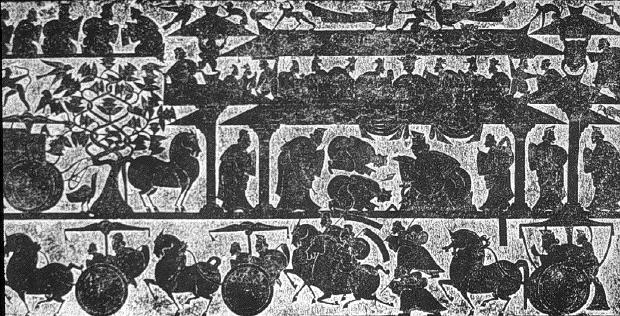VISUAL AND MATERIAL PERSPECTIVES ON EAST ASIA
Nov 9 (Friday), 4:00-6:00, CWAC 156
Professor Judith T. Zeitlin
East Asian Languages and Civilizations, the University of Chicago
“A Ming pipa in the Metropolitan Museum of Art: Toward a reconstruction of its literary, historical, and cultural context”
One of the treasures of the musical instrument collection at the Metropolitan Museum of Art is a richly decorated late Ming pipa made of wood, ivory, and bone. Slender and tear-shaped, the back of the instrument is honeycombed with some 120 ivory plaques carved with auspicious pictorial motifs, such as immortals, animals, and flowers. The pegbox terminates in a carved wooden bat or butterfly. On the front of the instrument is inset a small ivory spider, below which an ivory bird is carved in a rondel; an ivory-plated string holder with a four-character inscription and figural scene is glued to the wooden belly; another ivory plaque between the body and neck pictures a boy and a man holding a fish. The wooden belly is worn and has scratches around the string holder, suggesting that despite its lavish ornamentation, the pipa had been played in the past and was not merely for display.
What was this instrument? Where might it have been fashioned and who could have played it? What does its decorative program mean and why was it ornamented so lavishly? And above all what can this sort of highly wrought luxury object tell us about the representation and social practice of music in early modern China?
Nothing is known of this pipa’s provenance except that was a bequest of the American philanthropist and art collector Mary Stillman Harkness in 1950, and there has been no serious study of this instrument.
My paper attempts to situate this instrument within the literary, historical, and cultural context of early modern music, performance, and decorative objects. To interpret the cultural meanings of this enigmatic object, I will take two approaches: intrinsic and extrinsic. By intrinsic, I mean studying the decorative program, material, and design of the object itself; by extrinsic, I mean studying how such an instrument might have been treated and given meaning by others in the early modern period. In this latter pursuit, I will focus on one particular figure, Kong Shangren, the famous early Qing playwright of Peach Blossom Fan, who was a keen collector of rare antique musical instruments. My overall aim is to use this case study of the Met pipa as a way of integrating the material evidence of extant musical instruments from sixteenth- and seventeenth-century with analysis of the multi-dimensional representation of the musical instrument in the literary work of late Ming and early Qing playwrights and poets.
Persons with a disability who believe they need assistance are requested to contact quincyngan@uchicago.edu in advance.
